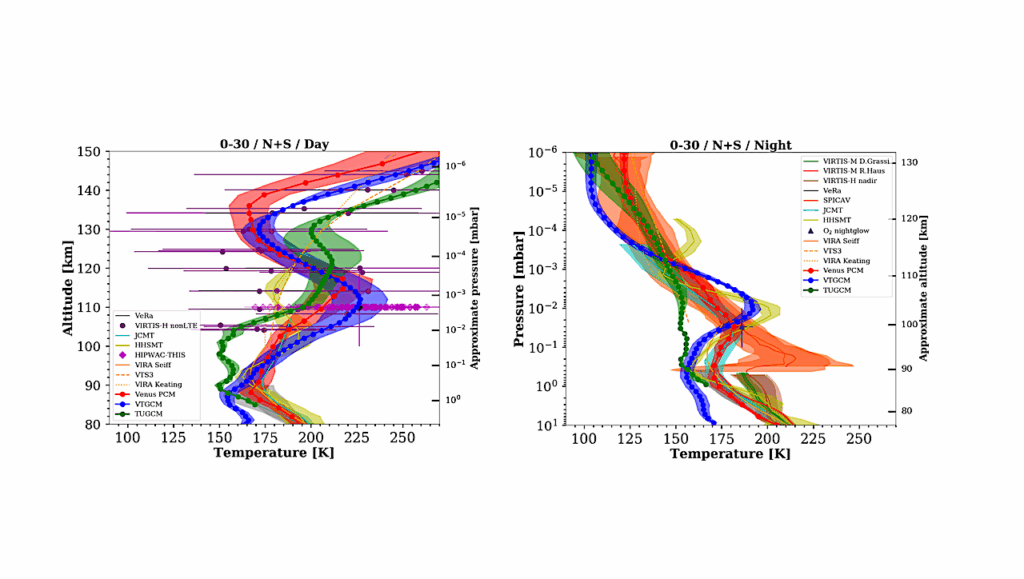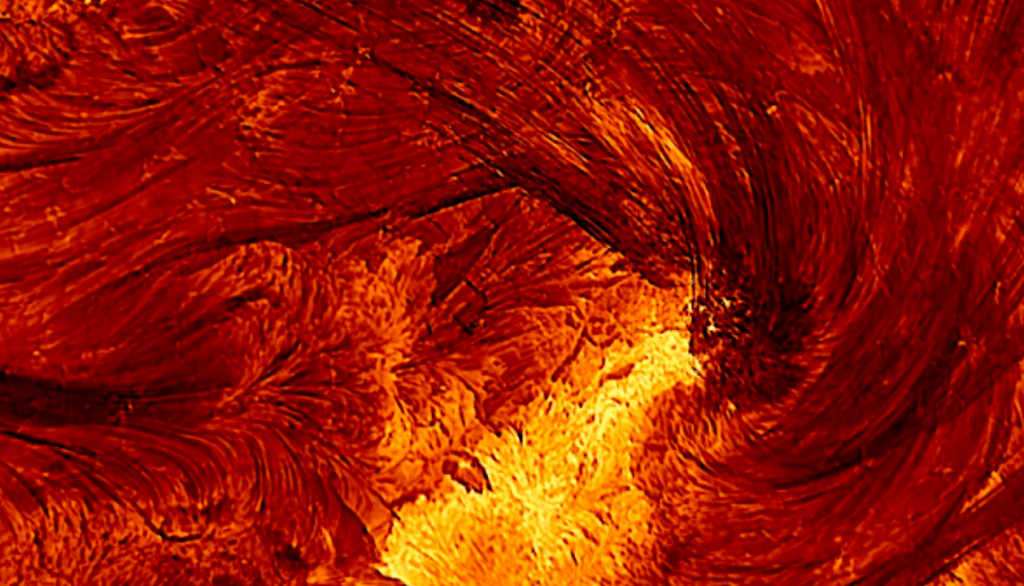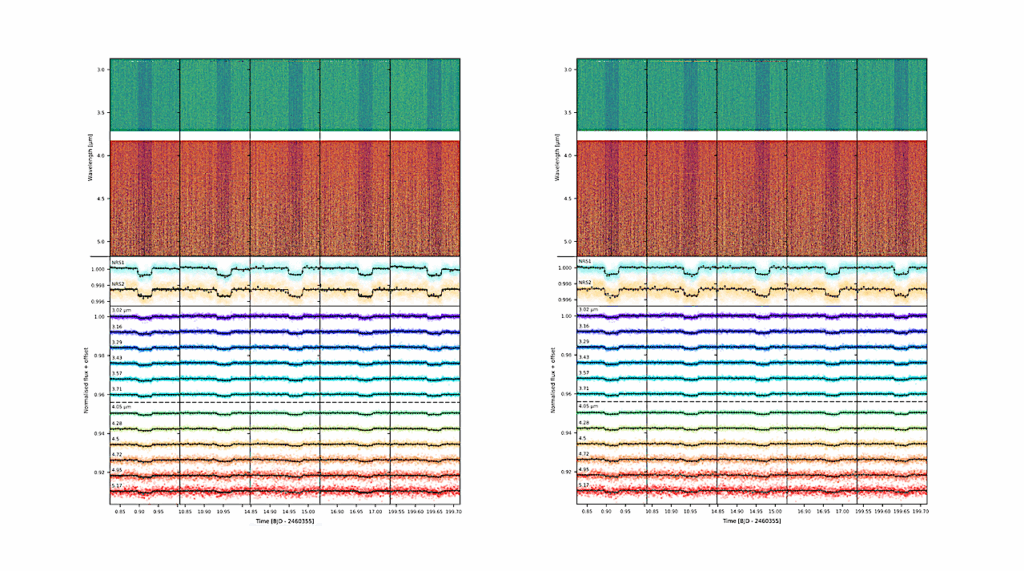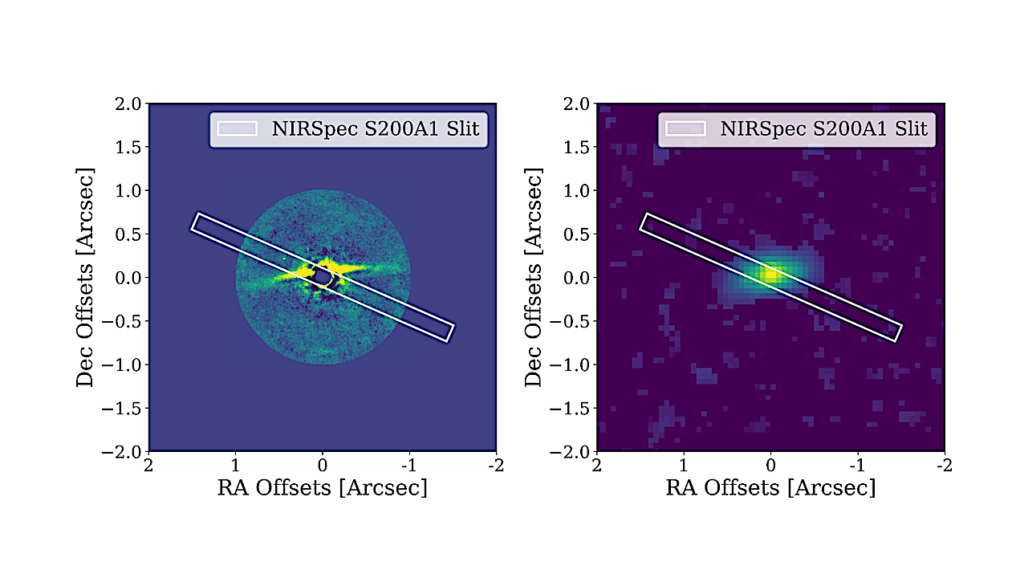Life In The Atlantic Ocean Thrives Due To Windblown Saharan Dust
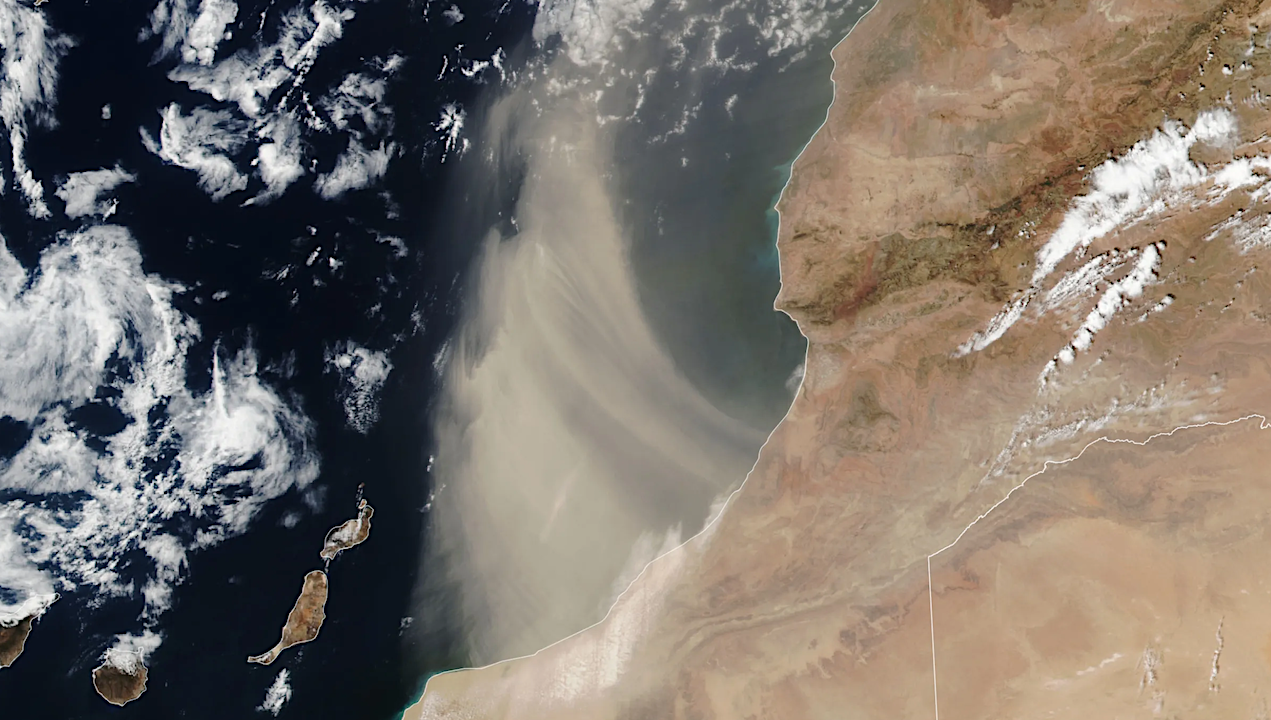
Iron is a micronutrient indispensable for life, enabling processes such as respiration, photosynthesis, and DNA synthesis. Iron availability is often a limiting resource in today’s oceans, which means that increasing the flow of iron into them can increase the amount of carbon fixed by phytoplankton, with consequences for the global climate.
Iron ends up in oceans and terrestrial ecosystems through rivers, melting glaciers, hydrothermal activity, and especially wind. But not all its chemical forms are ‘bioreactive’, that is, available for organisms to take up from their environment.
“Here we show that iron bound to dust from the Sahara blown westward over the Atlantic has properties that change with the distance traveled: the greater this distance, the more bioreactive the iron,” said Dr Jeremy Owens, an associate professor at Florida State University and a co-author on a new study in Frontiers in Marine Science.
“This relationship suggests that chemical processes in the atmosphere convert less bioreactive iron to more accessible forms.”
The core of the matter
Owens and colleagues measured the amounts of bioreactive and total iron in drill cores from the bottom of the Atlantic Ocean, collected by the International Ocean Discovery Program (IODP) and its earlier versions. IODP aims to improve our understanding of changing climate and oceanic conditions, geological processes, and the origin of life. The researchers selected four cores, based on their distance from the so-called Sahara-Sahel Dust Corridor. The latter ranges from Mauritania to Chad and is known to be an important source of dust-bound iron for downwind areas.
The two cores closest to this corridor were collected approximately 200km and 500km west of northwestern Mauritania, a third in the mid-Atlantic, and the fourth approximately 500km to the east of Florida. The authors studied the upper 60 to 200 meters of these cores, reflecting deposits over to the last 120,000 years – the time since the previous interglacial.
They measured the total iron concentrations along these cores, as well as concentrations of iron isotopes with a plasma-mass spectrometer. These isotope data were consistent with dust from the Sahara.
They then used a suite of chemical reactions to reveal the fractions of total iron present in the sediments in the form of iron carbonate, goethite, hematite, magnetite, and pyrite. The iron in these minerals, while not bioreactive, likely formed from more bioreactive forms through geochemical processes on the seafloor.
“Rather than focusing on the total iron content as previous studies had done, we measured iron that can dissolve easily in the ocean, and which can be accessed by marine organisms for their metabolic pathways,” said Owens.
“Only a fraction of total iron in sediment is bioavailable, but that fraction could change during transport of the iron away from its original source. We aimed to explore those relationships.”
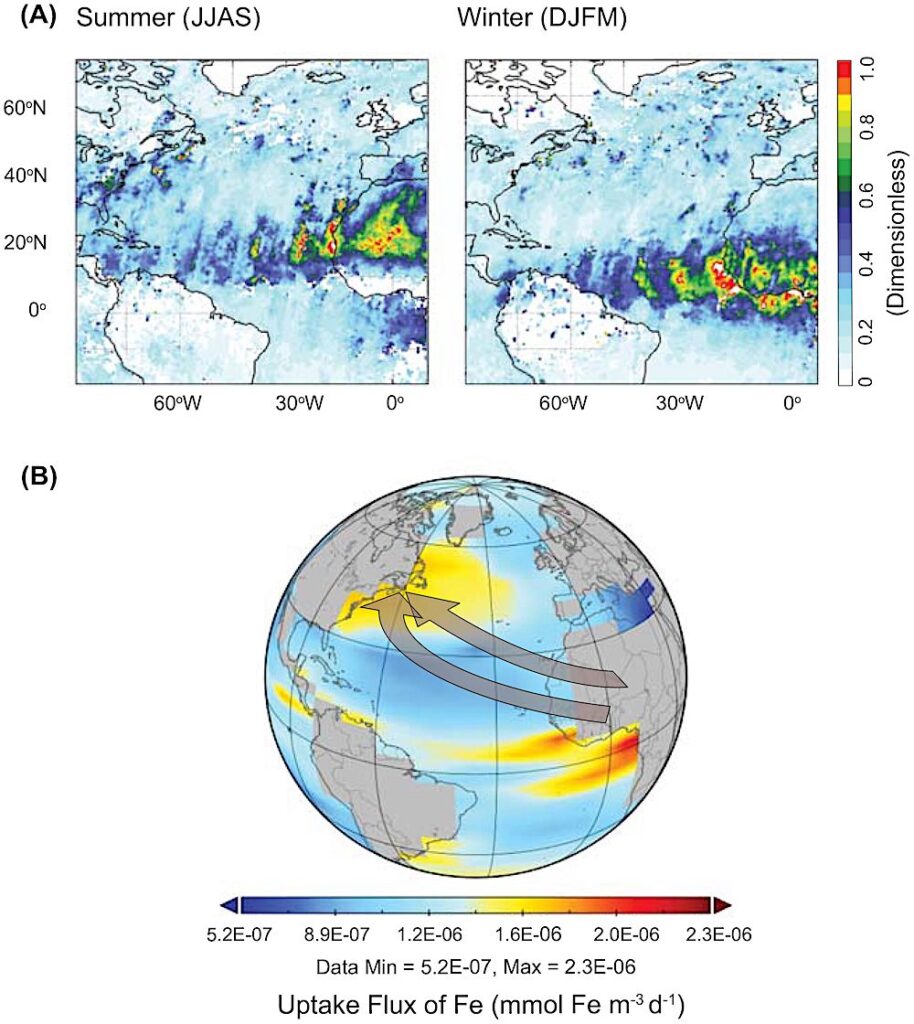
(A) Modern dust transport over the North Atlantic Ocean. Map of dust aerosol optical depth (AOD) over the North Atlantic showing the transport of African dust across the North Atlantic Ocean during the boreal summer [June-July-August-September (JJAS)] and boreal winter [December-January-February-March (DJFM)]. AOD is a measure of the extinction of the solar beam by dust and haze. It is a dimensionless number that is related to the amount of aerosol in the vertical column of atmosphere over the observation location. (B) Uptake of Fe flux modeled using ecoGEnIE. Gray arrow indicates the African dust that are carried from Northern Africa across the Atlantic Ocean. — Frontiers in Marine Science
Blowing in the wind
The results showed that the proportion of bioreactive iron was lower in the westernmost cores than in the easternmost ones. This implied that a correspondingly greater proportion of bioreactive iron had been lost from the dust and presumably been used by organisms in the water column, so that it had never reached the sediments at the bottom.
“Our results suggest that during long-distance atmospheric transport, the mineral properties of originally non-bioreactive dust-bound iron change, making it more bioreactive. This iron then gets taken up by phytoplankton, before it can reach the bottom,” said Dr Timothy Lyons, a professor at the University of California at Riverside and the study’s final author.
“We conclude that dust that reaches regions like the Amazonian basin and the Bahamas may contain iron that is particularly soluble and available to life, thanks to the great distance from North Africa, and thus a longer exposure to atmospheric chemical processes,” said Lyons.
“The transported iron seems to be stimulating biological processes much in the same way that iron fertilization can impact life in the oceans and on continents. This study is a proof of concept confirming that iron-bound dust can have a major impact on life at vast distances from its source.”
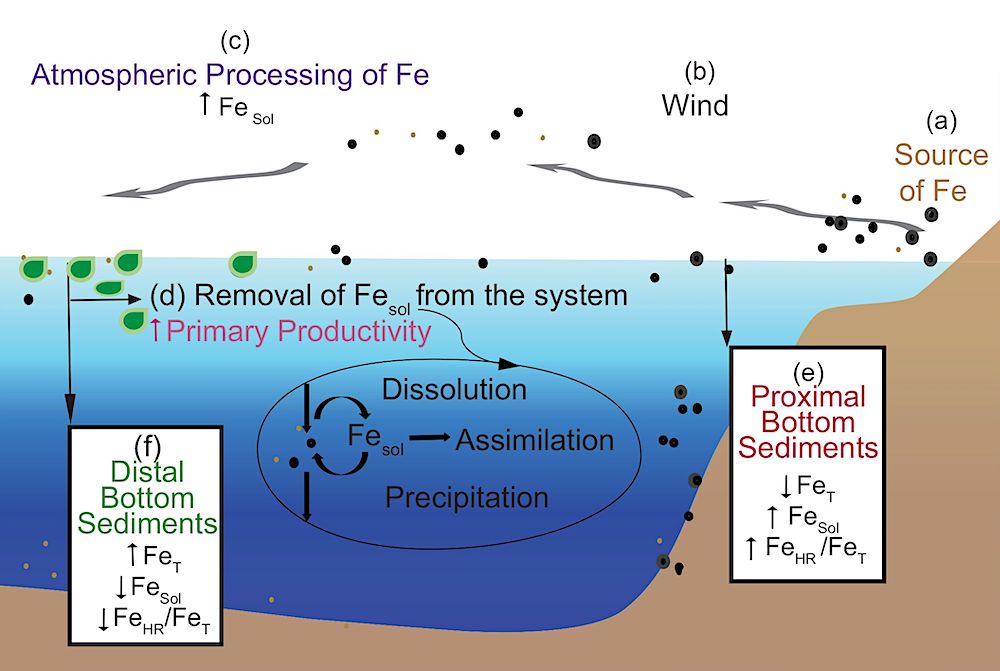
Generalized schematic of the iron biogeochemical cycle. The major source of Fe in the open ocean is dust delivered by the atmosphere. FeT: total, FeHR: highly reactive Fe (at least partly bioavailable Fe at the time of deposition), and FeSol: soluble Fe (bioavailable Fe that is readily used for primary productivity). (A) Source of dust is from the Sahara Desert. (B) Wind eroding soils containing Fe oxides and silicates leads to transport of the dust seaward. Coarse particles will sink rapidly, while smaller particles will travel further in the atmosphere and remain in the surface ocean longer. (C) Atmospheric processing can increase Fe solubility and bioavailability. (D) In the ocean, FeSol is removed from the system via dissolution and is assimilated by the phytoplankton. The dissolved Fe does not remain in solution in oxic seawater since oxidation to Fe(III) is rapid, and seawater is close to saturation with iron(oxyhydr)oxides. (E) Sediments of proximal sites show relatively low values for FeT due to carbonate dissolution and relatively high FeSol and FeHR/FeT. (F) Sediments at distal sites show decreases of FeSol due to its dissolution and removal by primary producers in the surface ocean, leading to low values for FeSol and FeHR/FeT in the underlying sediments. — Frontiers in Marine Science
Long-range transport of dust enhances oceanic iron bioavailability, Frontiers in Marine Science (open access)
Astrobiology


